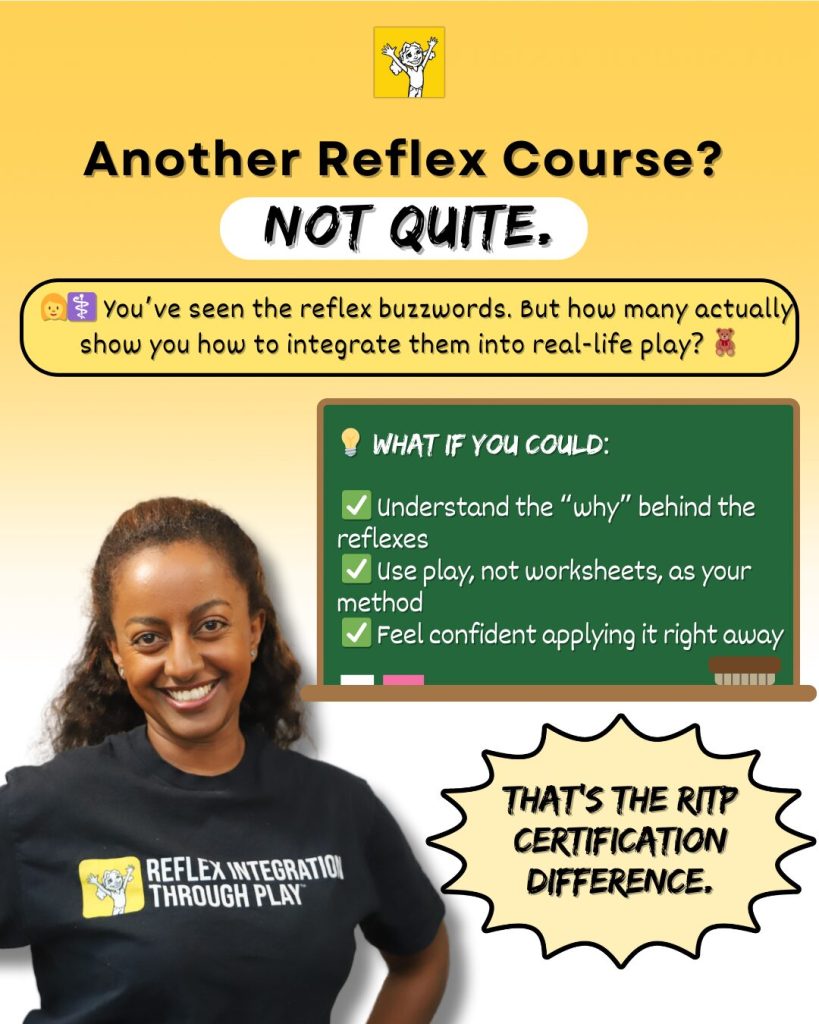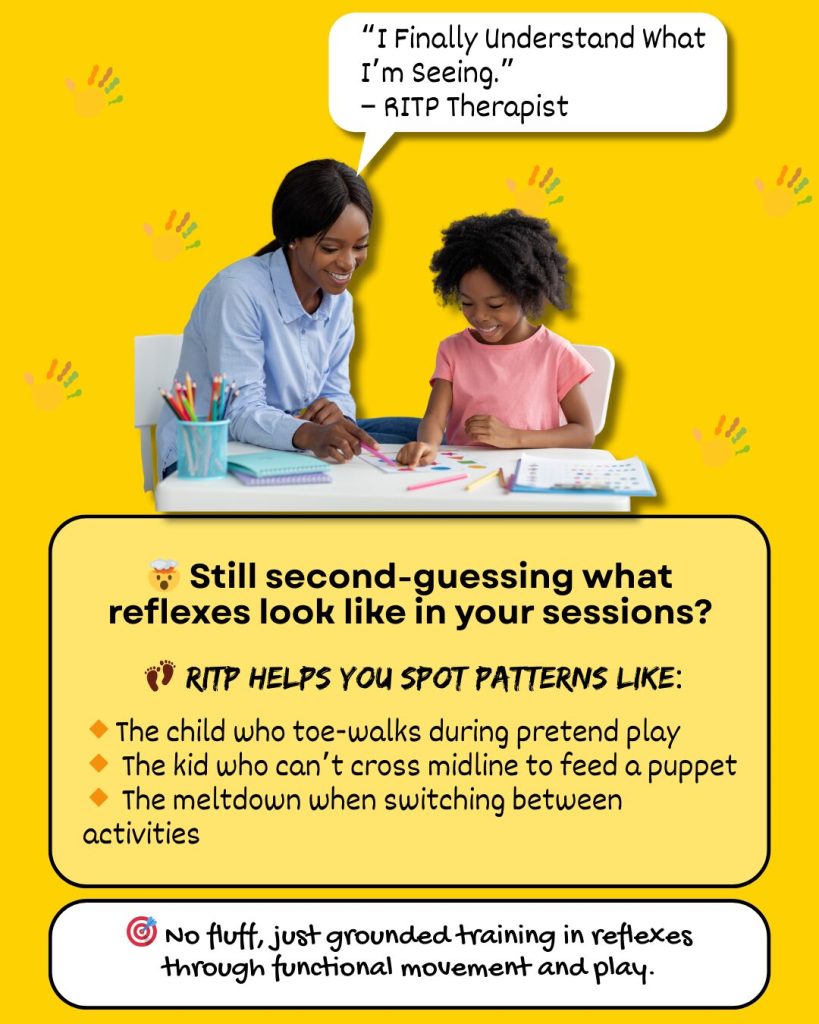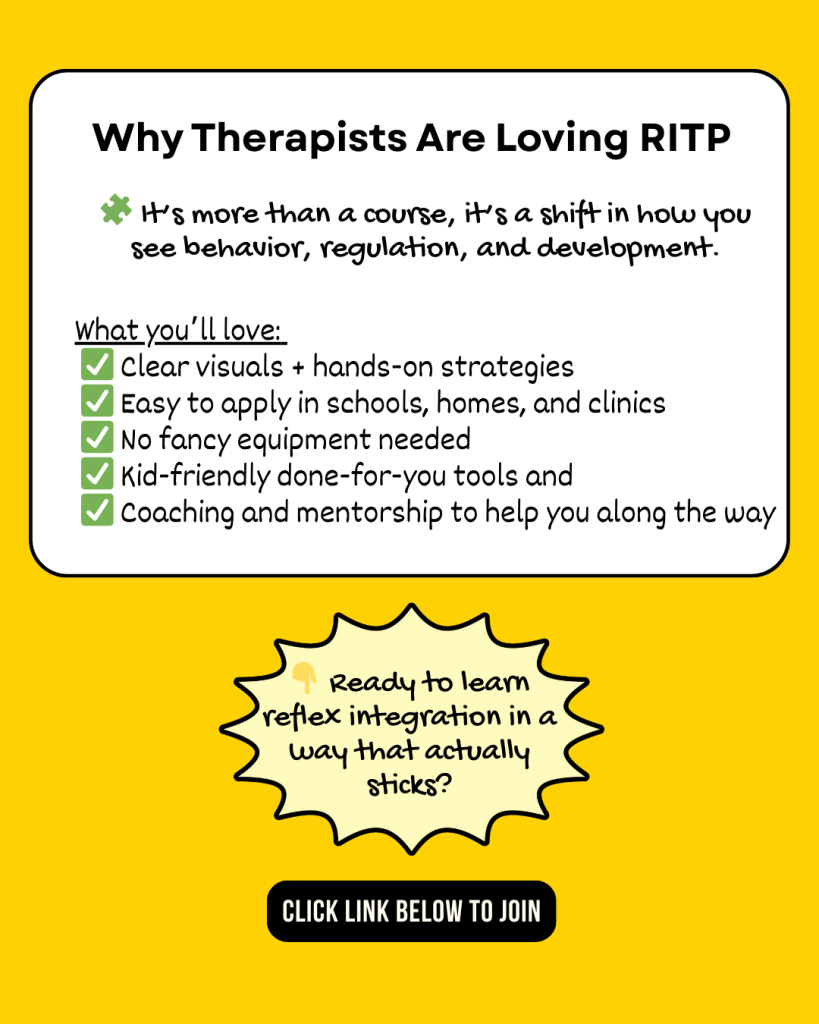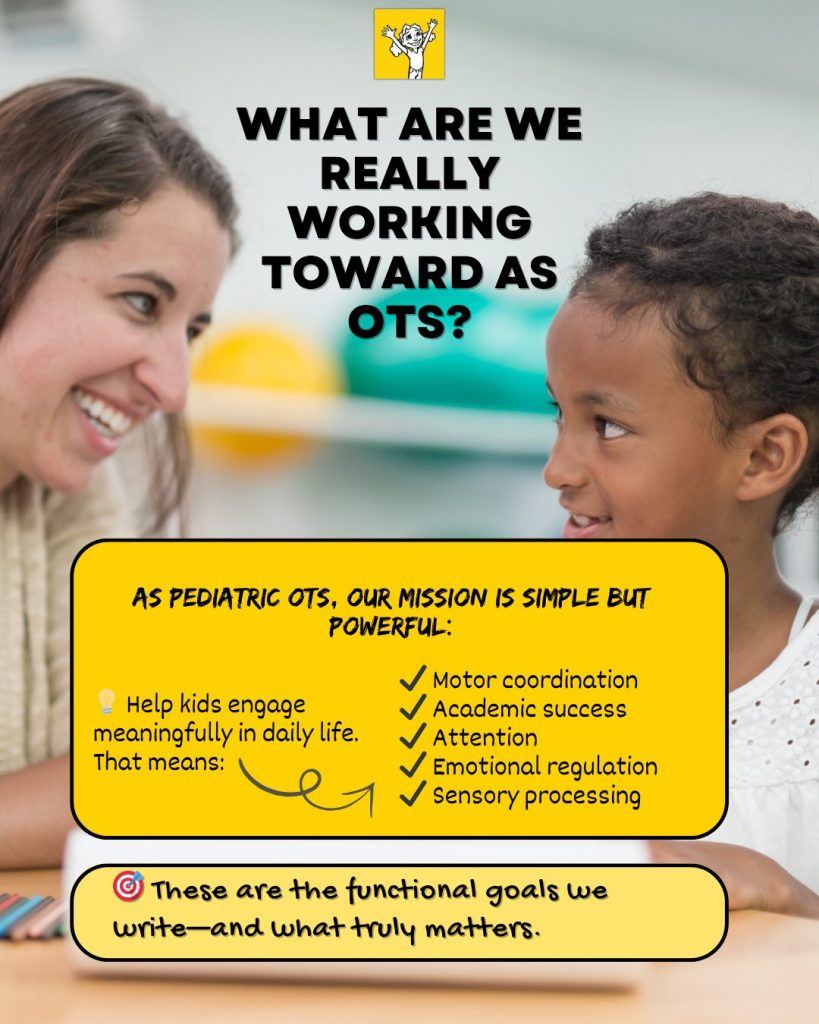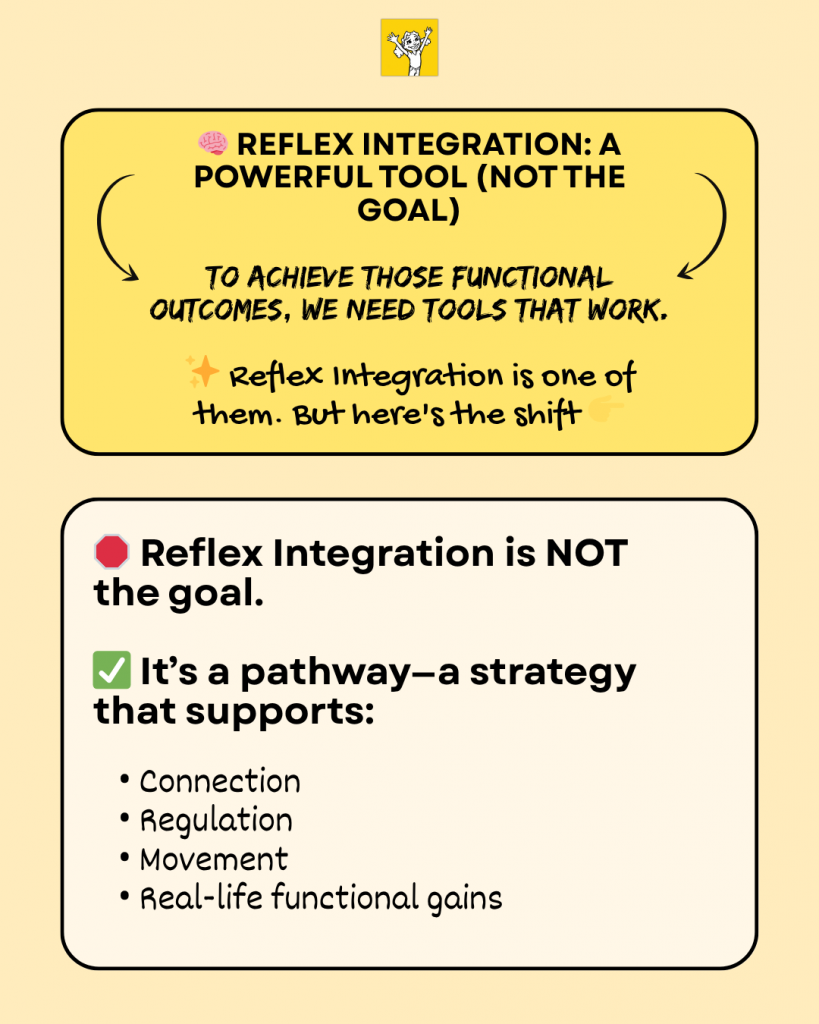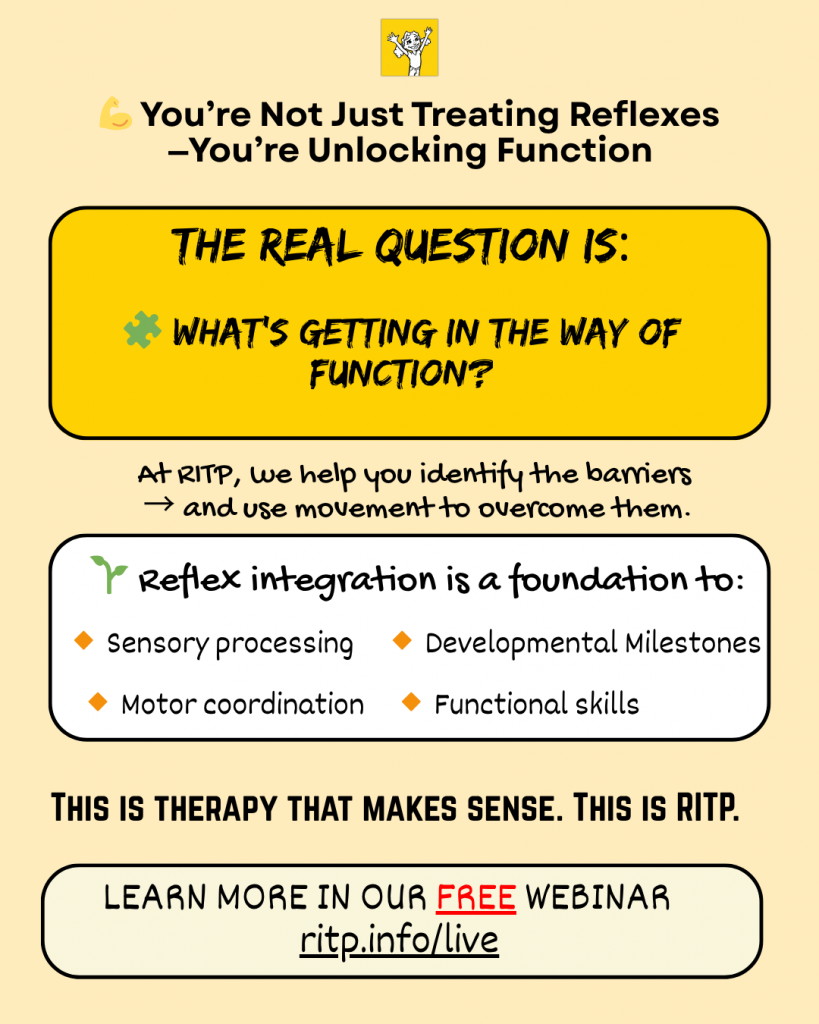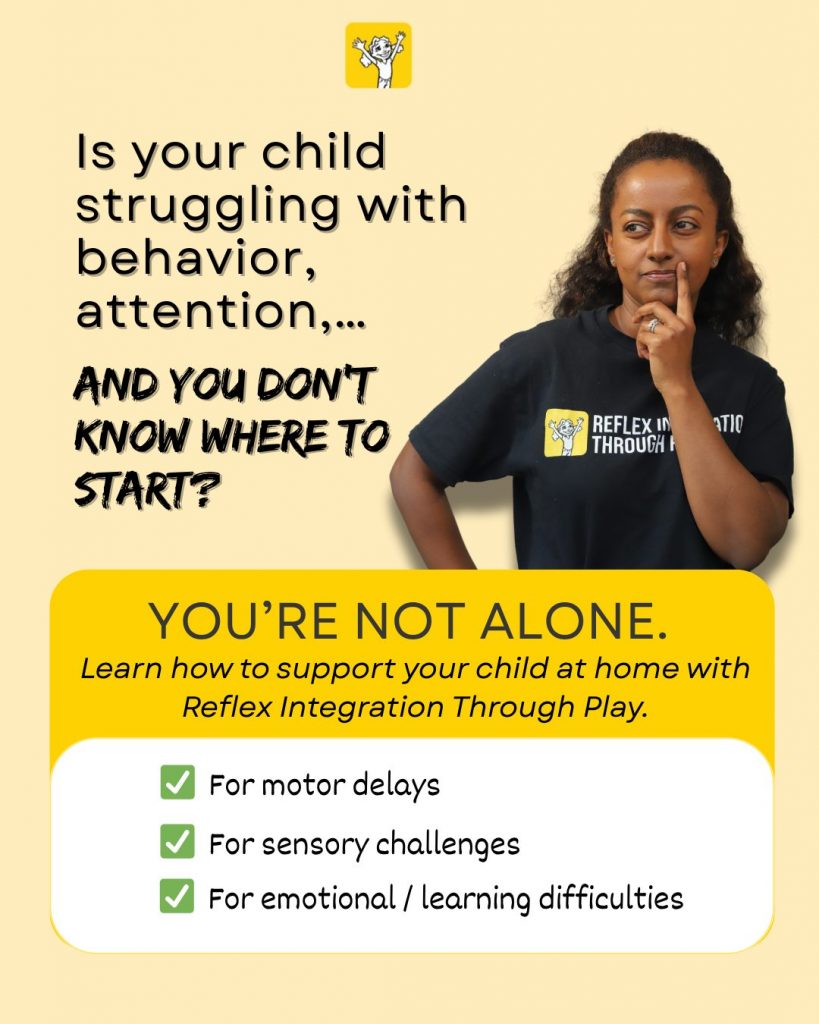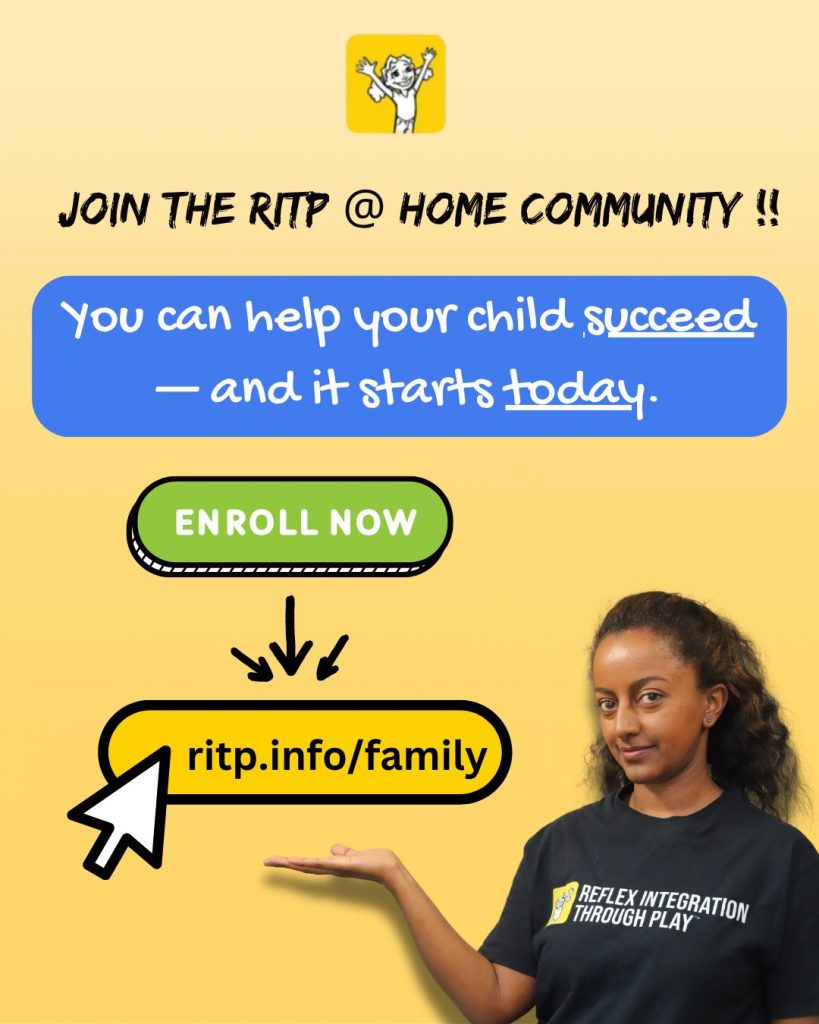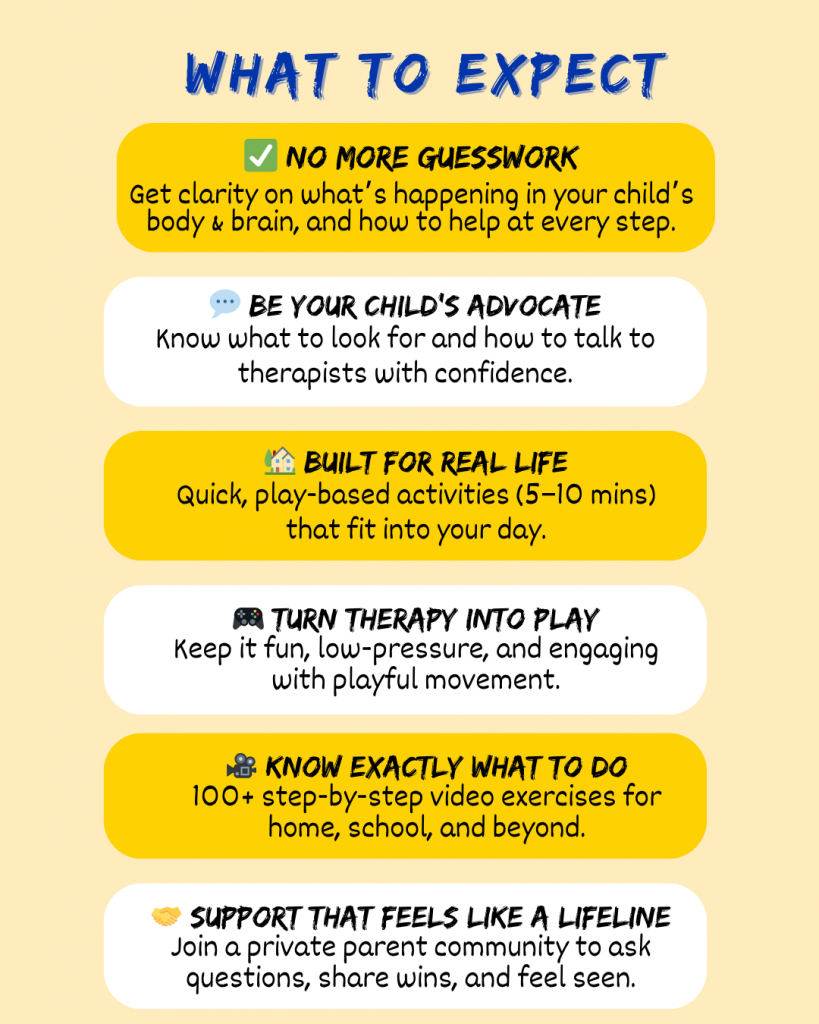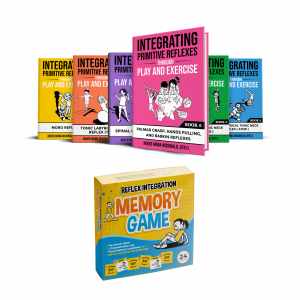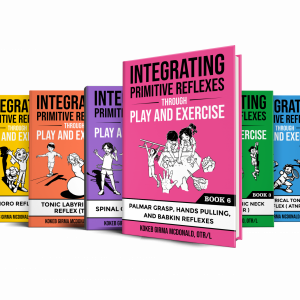Pediatric occupational therapists (OTs) dedicate themselves to supporting children’s growth and development—but the process of planning effective treatment can often feel overwhelming. With scattered resources, endless activity options, and the constant pressure to address multiple skills at once, treatment planning can easily lead to stress and even burnout.
In a recent episode of the Reflex Integration Through Play (RITP) Podcast, Kokeb dives into one of the biggest challenges pediatric occupational therapists face—treatment planning.
Common Challenges OTs Face
Therapists are passionate about helping children, but many find themselves hitting the same walls again and again:
- Overwhelm: Trying to address every problem at once delays, unmet skills, behaviors can leave both the therapist and the child spinning. Without a clear order of priorities, sessions can feel scattered instead of structured, making progress harder to see.
- Resource Scatter: With countless books, online programs, and activities available, it’s easy to get lost in the options. Many OTs spend hours piecing together resources, creating activities from scratch, or trying different tools in the hope that one will stick. Without a clear framework, this trial-and-error approach drains time and energy.
- Burnout: When systems become too complicated and demands pile up, emotional and physical exhaustion creep in. Burnout not only impacts a therapist’s well-being, but it also affects the quality of therapy delivered and ultimately, the child’s outcomes.
Kokeb acknowledges these struggles and reframes treatment planning as something that should feel structured, sustainable, and purposeful, not like a never-ending to-do list.
Key Strategies to Streamline Planning
Start with a targeted screening
- Kokeb emphasizes zeroing in on what’s most relevant. A focused screening highlights the child’s most pressing developmental needs and serves as the foundation for streamlined planning.
Apply the “one thing” approach
- Rather than trying to fix everything at once, pick the one thing that will have the greatest impact. This shift not only reduces overwhelm but also ensures meaningful progress, giving the therapist and child a clear sense of direction.
Incorporate repetition and carryover
- Therapy only works if it’s reinforced outside the clinic. Kokeb stresses the importance of team and home programs—simple, practical activities that families and educators can consistently integrate into daily routines, such as the RITP App. This repetition is where long-term change takes root.
Understand client interests
- Engagement is key. By connecting treatment activities to what a child already loves, whether that’s building, drawing, or pretend play. therapists can spark motivation and increase participation. This creates a more natural and joyful therapy process.
Key Moments From the Episode
Here’s a quick breakdown if you want to jump around:
- [00:00] Introduction to the Podcast
- [00:29] Challenges Faced by Pediatric OTs
- [01:15] Starting with a Targeted Screening
- [02:51] The One Thing Approach
- [04:29] Incorporating Team and Home Programs
- [06:59] Understanding Client Interests
- [08:57] Final Thoughts and Certification Program
- [09:35] Testimonial from a Certified Therapist
- [10:46] Conclusion and Contact Information
Why This Matters
At the end of the day, effective therapy isn’t about how many activities are squeezed into a session, it’s about creating meaningful, purposeful, and measurable progress. Simplifying treatment planning allows OTs to stay grounded, avoid professional burnout, and support children with clarity and purpose.
Treatment plans aren’t checklists, but roadmaps.
When we simplify, we create space for children to thrive.
This episode is for pediatric occupational therapists who want to cut through the overwhelm, build stronger carryover at home and school, and feel more confident in their day-to-day planning.

